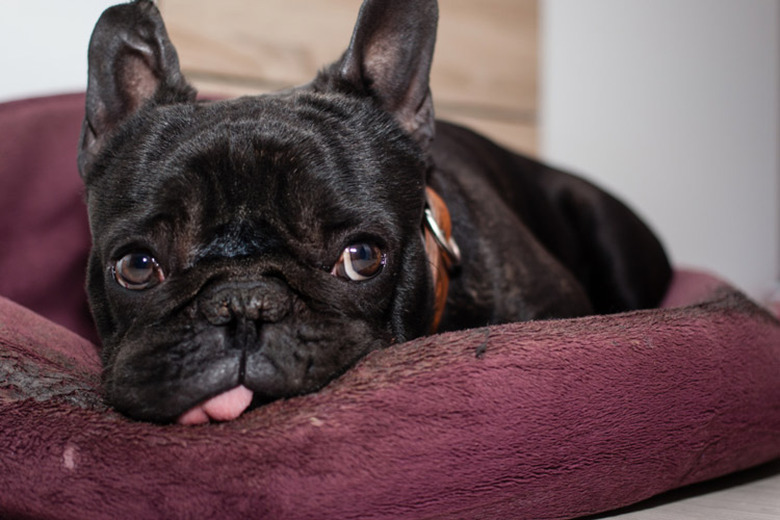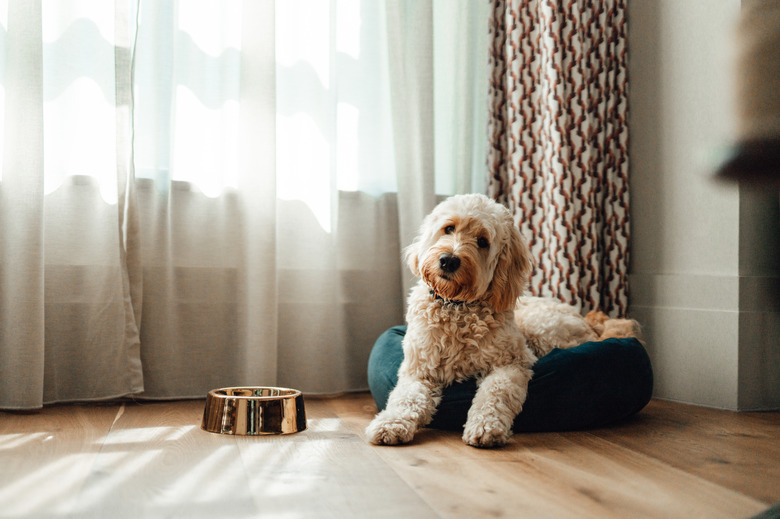How To Clean A Smelly Dog Bed With Vinegar
Dog beds are often overlooked during a household cleaning binge, but if they are left unattended for too long, they can be a source of unwanted odor and microbes. Many dog beds are designed with a removable cover, and these are easiest to clean regularly. However, foam beds without an option to zip off the cover are the most challenging to keep clean. Don't panic because there are safe ways to clean both types of dog beds without harsh chemicals. Simply washing a dog's bed with vinegar and baking soda is an effective way to eliminate damp dog smell and deodorize a pet bed.
How to clean a pet bed
How to clean a pet bed
First, vacuum the dog bed thoroughly to remove as much dog hair as possible. Lint rollers and even tape can help lift off fur stubbornly adhering to the fabric. This step is important because fur can clog washing machines. Next, if the bed is machine washable, simply unzip the cover and toss it in the washing machine as you would a load of laundry.
However, if the bed is not machine washable or does not have a removable cover, do not toss a foam bed into a household washing machine. The foam will absorb a lot of water and become so heavy during the wash cycle that it will likely damage a household-sized washing machine.
Laundromats have commercial-size washing machines designed for heavy loads, and a foam bed will be a very heavy load. It will also take a while to air dry, so plan on your dog being without this bed for a day or two. It's recommended not to put foam in dryers, especially on high temperatures.
How to deodorize a dog bed
How to deodorize a dog
bed
Getting a urine smell out of a dog bed or removing other strong scents is possible. Whether you are cleaning a cover at home or washing an entire bed at a laundromat, using a mild detergent and vinegar is the best way to deodorize a dog bed. Add 1/2 cup of white vinegar or apple cider vinegar to the rinse cycle. If the bed is particularly strong-smelling, add a full cup of vinegar for a dog odor neutralizer.
Washing a dog bed with vinegar and baking soda
Washing a dog bed with vinegar and baking soda
If you're washing a foam bed at home, you'll have to wash the bed by hand in a bathtub or large laundry sink. Getting a urine smell out of a dog bed by hand is a bit of work. Fill a tub with water and add a small amount of mild detergent. Gently massage the foam bed. Rinse all detergent out of the bed and refill the tub.
Add 1/2 cup of white vinegar or apple cider vinegar to the water and wring it through the bed. A vinegar rinse will also help remove any remaining detergent. Rinse out the vinegar and squeeze out as much water as possible. Air dry or dry in the sun to prevent mildew from developing.
Baking soda can help remove unwanted odors in dog beds before you are able to thoroughly wash the bed. Sprinkle the surface of the bed with a noticeable layer of baking soda and leave it for several hours, keeping the bed out of your dog's reach. Vacuum up all the baking soda along with dog fur.
Are baking soda and vinegar safe for dogs?
Are baking soda and
vinegar safe for dogs?
Both baking soda and vinegar are safe for dogs if they don't ingest any. Baking soda, also known as sodium bicarbonate, is a milder form of salt and is good for neutralizing odors. Because it has alkaline properties, it boosts the effectiveness of vinegar. Using one after the other — sprinkle baking soda, vacuum, and then wash with vinegar — increases the chances of getting a urine smell out of a dog bed.


